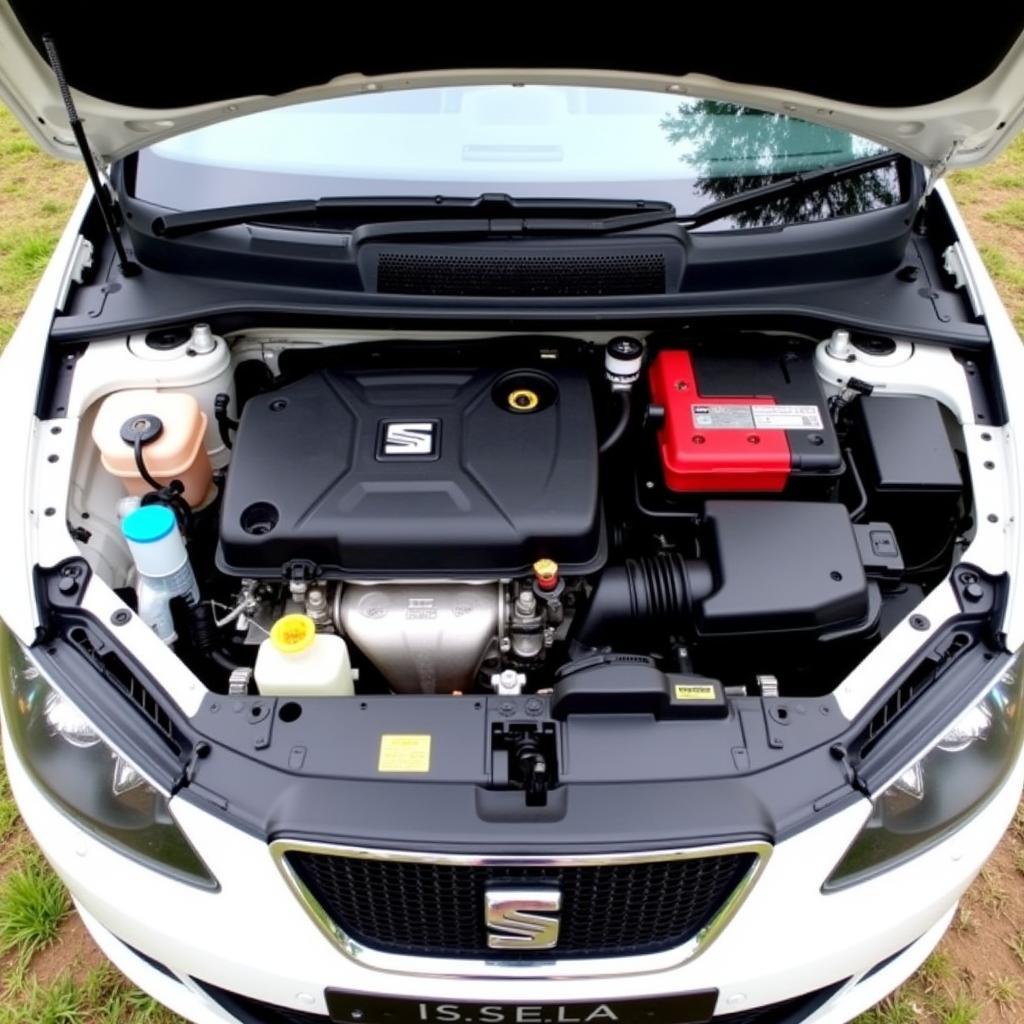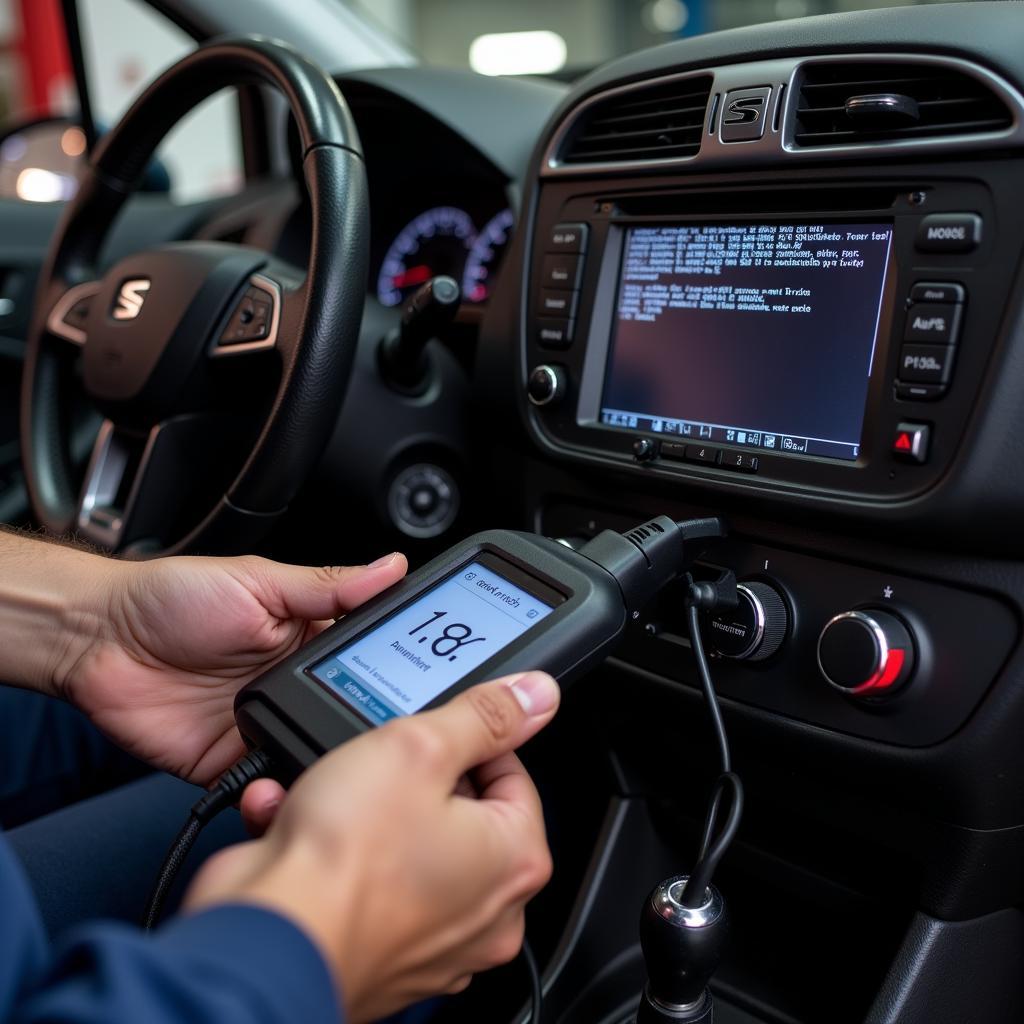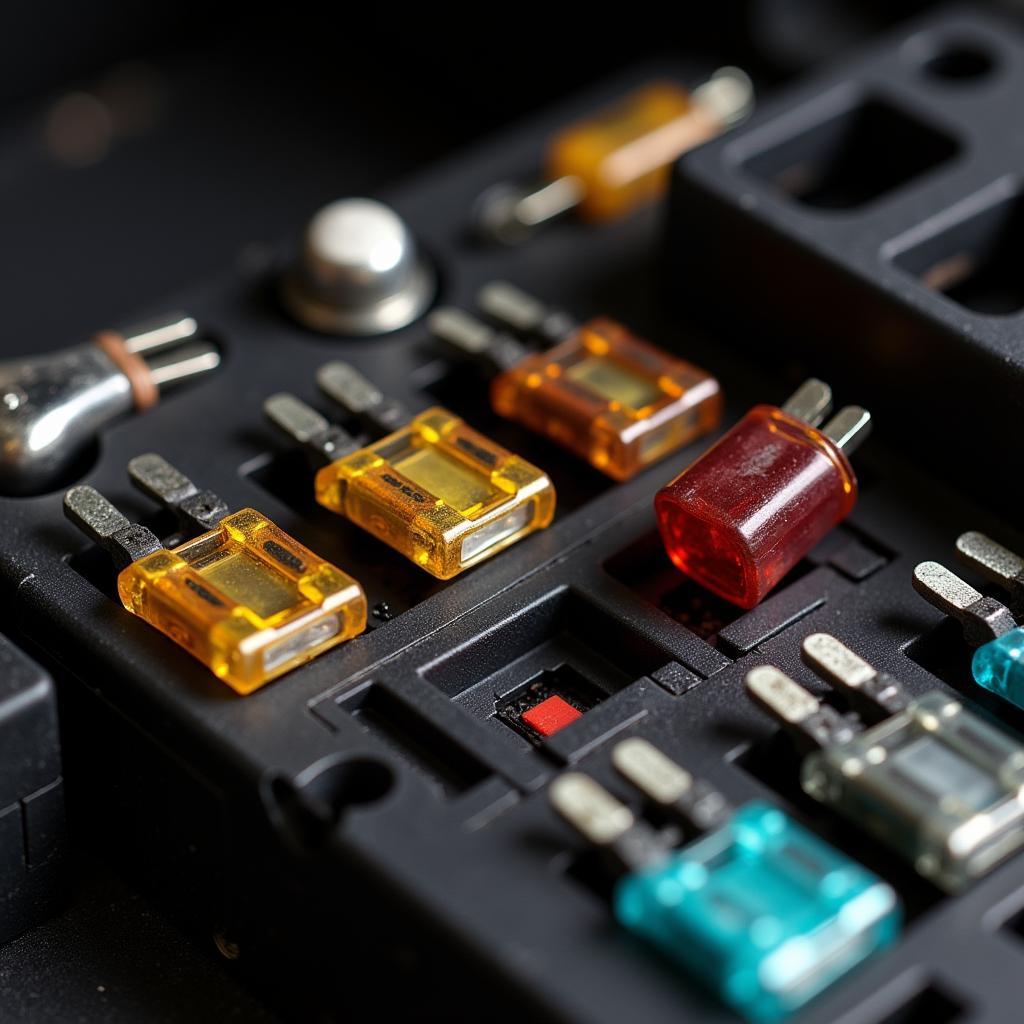The power steering warning light on your 2010 Seat Ibiza can be an unwelcome sight, often accompanied by a sudden increase in steering effort. This guide will delve into the common causes of this issue, potential solutions, and provide you with the knowledge to address this problem.
Understanding Your Seat Ibiza’s Power Steering System
Before we dive into troubleshooting, let’s briefly cover the basics. Your Seat Ibiza, like many modern cars, likely utilizes an Electric Power Steering (EPS) system. Unlike traditional hydraulic systems, EPS relies on an electric motor to assist steering, offering improved fuel efficiency and responsiveness.
When the power steering warning light illuminates, it signals a problem detected within this system. Ignoring this warning can lead to increased driving difficulty and potential safety hazards.
Common Causes of the Power Steering Warning Light
Several factors can trigger the power steering warning light in your 2010 Seat Ibiza:
- Low Battery Voltage: EPS systems are reliant on a consistent power supply. A weak or failing battery can disrupt this, causing the warning light to appear.
- Faulty Steering Angle Sensor: This sensor relays information about your steering wheel’s position to the EPS control unit. A malfunctioning sensor can disrupt the system’s operation.
- Power Steering Control Unit Issue: The control unit acts as the brain of the EPS system. A faulty unit may misinterpret data or fail to command the electric motor correctly.
- Wiring Harness Problems: Damaged, corroded, or loose wiring within the EPS system can disrupt communication and power delivery.
- Electric Motor Malfunction: A failing electric motor, responsible for providing steering assistance, will trigger the warning light and result in heavy steering.
Troubleshooting the Power Steering Warning Light
While diagnosing the exact cause often requires specialized equipment, here are some initial steps you can take:
- Check Your Battery: Begin with the simplest solution. Inspect your battery terminals for corrosion or loose connections. If possible, test your battery’s voltage – a significantly low reading could point to a battery issue.
- Visual Inspection: Open the hood and carefully examine the wiring harness related to the power steering system. Look for any visible damage, loose connections, or signs of rodent chewing.
- Steering Wheel Check: Turn the steering wheel to its extreme left and right positions. Listen for any unusual noises or grinding sounds, which could indicate a problem with the steering angle sensor or electric motor.
 Seat Ibiza Engine Bay
Seat Ibiza Engine Bay
Seeking Professional Assistance
If the initial checks don’t resolve the issue, seeking professional help is crucial. A qualified mechanic with access to diagnostic tools can pinpoint the root cause:
- Diagnostic Scanning: A professional scan tool can read fault codes stored within the EPS control unit, providing valuable insight into the problem’s nature and location.
- Component Testing: Mechanics can individually test components like the steering angle sensor, control unit, and electric motor to determine their functionality.
 Seat Ibiza Diagnostic Scan
Seat Ibiza Diagnostic Scan
Remote Diagnostics and Software Solutions
Advancements in automotive technology have paved the way for remote diagnostics and software-based solutions.
- Remote Diagnostics: Some specialized services can remotely access your vehicle’s computer system, analyze data, and often provide a preliminary diagnosis.
- Software Updates: Occasionally, power steering issues stem from software glitches within the EPS control unit. A software update, often performed remotely or at a dealership, can rectify such problems.
Expert Insight: “Modern vehicles are increasingly reliant on software,” says automotive electronics specialist, Mark Jenkins. “A simple software update can sometimes resolve seemingly complex issues within the power steering system and other electronic modules.”
Addressing the Seat Ibiza Power Steering Issue: A Proactive Approach
Ignoring the power steering warning light can exacerbate the problem and potentially lead to more costly repairs.
By understanding the common causes, performing basic checks, and seeking professional help when needed, you can ensure the safe and reliable operation of your 2010 Seat Ibiza. Remember, a proactive approach to vehicle maintenance is always the best strategy.
FAQ
1. Can I still drive my Seat Ibiza with the power steering warning light on?
While technically possible, it’s highly discouraged. Driving without power steering assistance requires significantly more effort, especially at low speeds, and can be dangerous in emergency situations.
2. How much does it cost to fix a power steering issue on a Seat Ibiza?
Repair costs vary widely depending on the root cause. A simple battery replacement might cost under $200, while replacing a faulty steering angle sensor or electric motor could range from $500 to over $1000.
3. Can a low tire pressure trigger the power steering warning light?
While low tire pressure can make steering feel heavier, it doesn’t directly trigger the power steering warning light. The warning light is primarily associated with electrical or electronic faults within the EPS system.
4. Are there any preventative measures to avoid power steering issues?
Regular vehicle maintenance, including battery checks, visual inspections of wiring, and addressing potential fluid leaks, can help prevent power steering problems from arising.
5. Where can I find a qualified mechanic specializing in Seat vehicles?
Reputable independent mechanics specializing in European cars or authorized Seat dealerships often have technicians experienced in diagnosing and repairing power steering issues in Seat Ibiza models.


